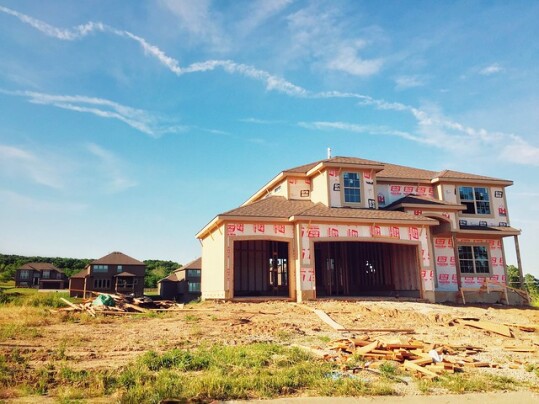According to the Mortgage Bankers Association’s Weekly Applications Survey, demand for loans to buy homes saw its second-consecutive weekly increase, rising 2 percent from the week before. The improvement came during a week when average mortgage rates increased for 30-year fixed-rate loans with conforming loan balances, loans backed by the Federal Housing Administration, and 15-year fixed-rate loans. Joel Kan, MBA’s associate vice president of economic and industry forecasting, says the gains are a sign that buying activity will likely remain strong in the weeks ahead. “Purchase applications increased for both conventional and government loan segments, as housing demand continues to show resiliency at a time – late fall – when home buying activity typically slows,” Kan said. “The second straight increase in purchase applications suggests that stronger sales activity may continue in the weeks to come.” The MBA’s weekly survey has been conducted since 1990 and covers 75 percent of all retail residential mortgage applications. (source)
Archive for November 2021
Builders Confident Despite Supply Side Issues
Home builders are facing many challenges these days. From the supply chain to labor and lot shortages, it’s a difficult time to be in the home-building business. But despite all of those issues, the National Association of Home Builders’ Housing Market Index – which measures how confident home builders are feeling on a scale where any number above 50 indicates more of them view conditions as good than poor – scored an 83 in November, up three points from the month before. So what explains the high level of optimism among home builders? Put simply, it’s buyer demand. “The solid market for home building continued in November despite ongoing supply-side challenges,” Chuck Fowke, NAHB’s chairman, said. “Lack of resale inventory combined with strong consumer demand continues to boost single-family home building.” In other words, buyer demand for homes remains elevated and the number of homes for sale remains lower than historically normal. That means, homes are in high demand and, despite current conditions, builders are feeling good about the market. (source)
What Fall Showings Can Tell Us About Spring
For a lot of us, it’s still hard to believe summer’s over and the clocks have already rolled back. But it is November and the holidays are just around the corner. So maybe it isn’t too soon to start thinking about spring. If you’re a potential home buyer looking to make a move in the next six months, it’s definitely not too early. In fact, it may be the perfect time to get a feel for what you might expect when the housing market starts to heat up again. One good indicator for where the market is headed is how many showings are being scheduled for the homes currently listed for sale. And, if the past is any indicator, you can tell a lot about what spring will look like based on what happens the previous fall. For example, last year’s fall market was atypically competitive – which could’ve tipped you off that the following spring would be among the hottest in recent memory. So how’s this fall been looking so far? Well, according to recently released data, the number of scheduled showings has been around 5 percent lower than it was at the same time in 2020. That’s a pretty good indication that the spring market will be less hectic than this year’s was, with price increases slowing and a higher number of homes for sale. (source)
Report Finds 57% Of Recently Sold Homes Affordable
By now, anyone interested in buying a house knows home prices have been rising. Climbing prices have been a factor for home buyers for years, and especially over the past 12 months. But while home prices have risen, that doesn’t necessarily mean you can’t find a home that’s affordable. It might actually be more possible than you think. For example, according to the National Association of Home Builders’ most recent Housing Opportunity Index – which measures how affordable buying a home is for families earning the U.S. median income – 56.6 percent of homes sold between the beginning of July and the end of September were considered affordable. That’s the good news. The bad news is affordability is at a lower level than it’s been in recent years. And, according to NAHB chairman, Chuck Fowke, the challenges home builders are facing have made it difficult to build the new homes that could help provide more affordable options for buyers. “Persistent building material supply chain bottlenecks and tariffs on Canadian lumber and Chinese steel and aluminum continue to place upward pressure on construction costs and home prices,” Fowke said. “Policymakers must fix supply chain vulnerabilities that are disrupting and delaying construction projects and hurting housing affordability.” (source)
Homeownership Benefits Buyers’ Bottom Line
New numbers from ATTOM Data Solutions show that 39.5 percent of mortgaged residential properties were considered equity rich during the third quarter. That’s up from 28.3 percent last year at the same time. So what does equity rich mean? Well, according to ATTOM’s U.S. Home Equity & Underwater Report, it means the amount of loan balances secured by those properties was no more than 50 percent of the home’s estimated market value. In other words, a large percentage of homeowners are seeing a big benefit to their bottom line as their home’s value continues to grow. But it isn’t just long-time homeowners who are benefiting. With national home values up 16 percent year over year, even recent buyers have begun to see gains. Todd Teta, ATTOM’s chief product officer, says the improvements have been the best in years. “Homeowners across most of the United States could sit back with a smile yet again in the third quarter and watch their balance sheets grow as soaring home prices pushed their equity levels even higher,” Teta said. “Amid the best gains in two years, nearly four of every 10 owners found themselves in equity-rich territory.” (source)
Mortgage Rates Fall For Second Straight Week
According to the Mortgage Bankers Association’s Weekly Applications Survey, average mortgage rates fell last week from the week before. Rates were down across all loan categories, including 30-year fixed-rate loans with both conforming and jumbo balances, loans backed by the Federal Housing Administration, and 15-year fixed-rate loans. The decline helped push demand for loan applications higher week over week. In fact, refinance activity moved up 7 percent and the purchase index was up 3 percent. Joel Kan, MBA’s associate vice president of economic and industry forecasting, says buyers returned to the market, but conditions remain challenging. “Purchase applications were also strong last week, increasing just under 3 percent and down only 4 percent from last year’s pace,” Kan said. “The dip in rates might have helped to bring some buyers back into the market, but housing inventory is still extremely low and price growth remains elevated.” Overall, mortgage application demand was up 5.5 percent from one week earlier. The MBA’s weekly survey has been conducted since 1990 and covers 75 percent of all retail residential mortgage applications. (source)
Majority Of Recent Buyers Are Happy They Moved
Everyone, from time to time, dreams of moving somewhere new. Whether the dream is to move to a nicer house in the same area, out of state, or somewhere even more exotic, the dream is always exciting. Reality, however, is something different. Buying and selling a house, packing up all of your belongings, and moving is a lot of work and it can get stressful at times. But, if you’re someone who’s feeling overwhelmed at the prospect of an upcoming move, there’s reason to be optimistic. In fact, according to a new survey, there’s very little chance you won’t come out on the other end happy that you did it. The survey – which asked Americans who recently relocated how happy they are since their move – found that the vast majority of them said they feel happier. Among respondents, 54 percent said they were much happier, while 29 percent said they feel a little bit happier. That leaves just 17 percent who either felt no different or less happy – with only 3 percent saying they were much less happy than before their move. (source)







